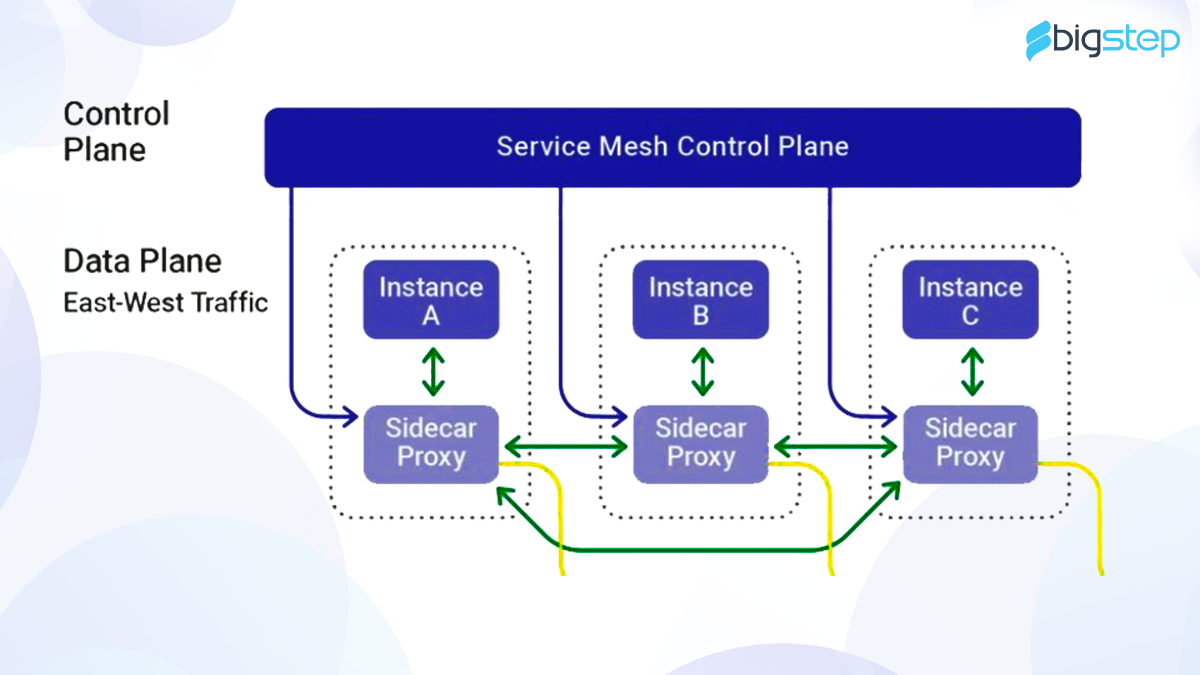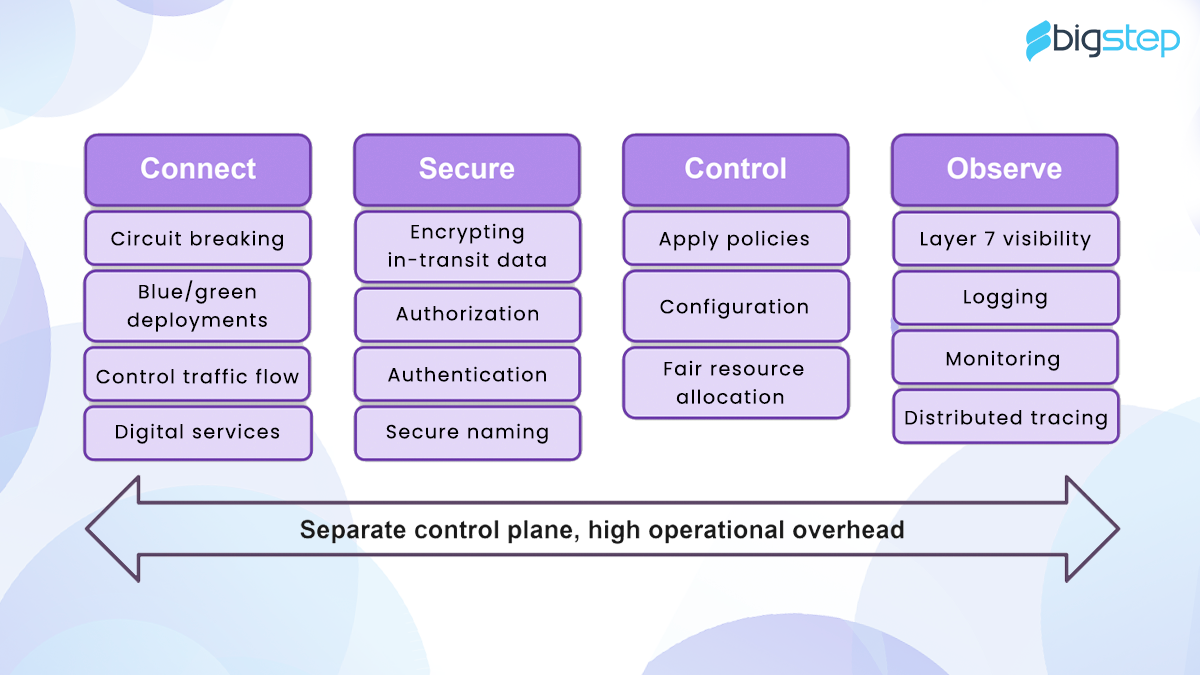Everything to Know About Service Mesh: Features, Pros & Architecture

Despite proposing countless benefits & use-cases, microservices also accompany several challenges. That is why over the years the market has curated multiple workarounds for effective deployment and management of microservices.
One such workaround is a service mesh, a popular tool used to add security, traffic management, and observability at the application layer. It enables SREs and developers in service-to-service communication in Kubernetes clusters. In addition, it also adds an extra control pane with operational sophistication for security teams.
Despite such use-cases, many organizations still fail to understand its true potential and importance. That is why the article will shed light on everything about service mesh and its important aspects.
What is a Service Mesh?
A service mesh can be defined as a software infrastructure layer that is used to control and monitor internal, service-to-service communication in microservices apps.
It offers some of the middleware along with some components to facilitate service-to-service interaction. Service mesh enables functionalities around load balancing traffic throughout services.
Moreover, it improves tracing observability, service discovery, and more. The service mesh architecture capitalizes on design patterns to facilitate seamless communication between these services without rewriting microservices applications.
What is a Service Mesh Architecture?
One of the major aspects of service mesh’s working is that it uses a sidecar design pattern. Generally, services interact and handle requests using a proxy, which is injected into every pod. Despite this design pattern preparing a data plane of a service mesh, the majority of the meshes add an extra control plane to operate the data plane.
The below pic will give you an idea of how the control plane and data plane work:

Features of a Service Mesh
Generally, a service mesh architecture adds several capabilities to enhance the communication between microservices. Here is an overview of its key features:
Observability: Service mesh architecture offers actionable insights about the health and behavior of services. The control plane collects and merges telemetry data from components’ interactions to assess metrics like latency, traffic, access logs, and distributed tracing.
Reliability: Using the control plane and sidecar proxies to manage communications elevates the reliability and efficiency of policies, configurations, and service requests. Some of its special capabilities include fault injection and load balancing.
Security: With a service mesh, developers can automatically distribute security policies and encrypt communications. The use of sidecar proxies and the control plane allows them to cope with complex connections within distributed apps.

Benefits and Drawbacks of Service Mesh
Here is a quick assessment of service mesh’s pros and cons to help developers make an educated decision.
Pros of Using Service Mesh
- It helps services to easily communicate in both containers and microservices
- It diagnoses communication problems, as they would automatically occur on the infrastructure layer
- It is compatible with security features, like authentication, authorization, and encryption
- It facilitates smoother app development, testing, and deployment
- It uses sidecars next to container clusters to manage network services
Cons of Using Service Mesh
- It increases the runtime instances
- It adds an extra step, as every service must first run through the sidecar proxy
- It does not add integration with other systems or services, and transformation mapping or routing type
- It centralizes and abstracts network management complexity, but does not eliminate them
Why Adding a Service Mesh is a Good Idea
Despite mentioning several cons around service mesh, its integration is still a beneficial choice for organizations. An app developed in a microservices architecture can contain numerous services. These services possess their individual instances that run in a live environment.
Thus, it is a huge challenge to monitor which components must communicate, and track their performance and health. In addition, the burden of making changes to components and services in case of a malfunction poses severe issues.
All this can be moderated by using a service mesh. The approach allows developers to divide and handle service-to-service interactions in a dedicated infrastructure layer. Even if the number of microservices within the application surges, the benefit of adding a service mesh increases as well.
Read More: How gRPC can Change Real-World Microservices Forever
The Service Mesh Market
Among the modern organizations that are currently using service meshes, names like HashiCorp Consul, Istio, and Linkerd are among the most used options.
Besides these three, here is a list of top service mesh products & services available in the market. Some of these products are partially open source while some are connected to other platforms. Nonetheless, they offer unmatched performance, viable for most modern organizations:
- AWS App Mesh
- F5 Nginx Service Mesh
- Buoyant Conduit
- Google Anthos Service Mesh
- Istio
- HashiCorp Consul
- Kong Mesh
- Linkerd
- Kuma
- Red Hat OpenShift Service Mesh
- Tetrate
- Solo.io Gloo Mesh
- Tigera Calico Cloud
- VMware Tanzu Service Mesh
- Traefik Labs
In Conclusion
Service meshes are a unique yet advantageous technology for developers trying to manage a containerized microservice framework. It is ideal to address the problem of identifying and routing calls to prepare an ideal service instance.
BigStep Technologies houses 200+ professionals who can help you understand service mesh and its application extensively. Our expertise spans numerous technologies and industries, helping us offer a complete suite of product engineering services.
You can make avail of this knowledge by contacting our experts at info@bigsteptech.com.
Kandarp Tiwari
A multi-verticals trained Digital Marketing Professional with 8+ years of Corporate Experience and an everlasting zeal to acquire knowledge. Particularly have a good capture over Digital Marketing and Emerging Tech.
No Comments
Sorry, the comment form is closed at this time.